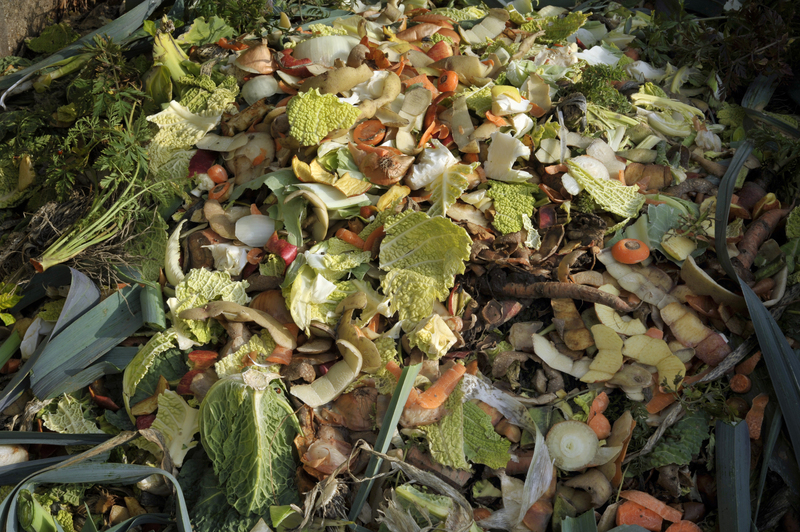Disposing of Masks and Gloves Responsibly for a Cleaner Planet
The ongoing health crises, including pandemics like COVID-19, have made the use of personal protective equipment (PPE) such as masks and gloves an essential part of daily life for many people around the globe. However, with this increased usage comes a significant surge in PPE waste. If masks and gloves are not disposed of responsibly, they contribute to environmental pollution, endanger wildlife, and threaten human health. Understanding how to dispose of these items properly is essential in our mission for a cleaner planet and a sustainable future.
Why Responsible Disposal of Masks and Gloves Matters
Every day, billions of masks and gloves are used and tossed, most ending up in landfills or worse--on streets, in rivers, and in the oceans. These items, often made with synthetic fibers like polypropylene and latex, do not decompose easily. Many can persist in the environment for hundreds of years, breaking down into microplastics that pollute our ecosystems.
- Environmental Threat: PPE waste is a new and growing form of plastic pollution.
- Wildlife Hazard: Animals can mistake discarded masks and gloves for food, leading to fatal ingestion or entanglement.
- Health Concerns: Improper handling can aid the spread of infectious agents, endangering sanitation workers and the public.
It's imperative not only for our own health but also for the protection of our ecosystems and the creatures that inhabit them, that we learn to handle PPE waste correctly.

Types of Masks and Gloves: Composition and Concerns
Before understanding how to dispose of masks and gloves responsibly, it is important to know the materials and the impact each type has:
Common Types of Masks:
- Surgical Masks: Mostly made from non-woven polypropylene.
- Cloth Masks: Washable, made from cotton or synthetic blends.
- N95 Respirators: Multi-layered, primarily polypropylene with possible electrostatic charge layers.
Common Types of Gloves:
- Latex Gloves: Natural rubber, biodegradable but not if mixed with chemicals during manufacturing.
- Nitrile Gloves: Synthetic rubber, durable but not biodegradable.
- Vinyl Gloves: Made from PVC, non-biodegradable.
It's clear that most single-use PPE is not easily recyclable or compostable, intensifying the burden on waste management systems.
Environmental Impact: The Alarming Truth
Improperly discarded PPE poses one of the most pressing waste management issues.
- Over 1.6 billion disposable masks are estimated to have entered the oceans in 2020 alone (OceanAsia study).
- PPE waste blocks sewage systems, helping spread disease and injuring aquatic life.
- The microplastics from decaying masks and gloves enter food chains, ultimately risking human health.
With stakes this high, each of us has a crucial role in ensuring sustainable disposal.
Best Practices for Disposing of Masks and Gloves Responsibly
At Home:
- Remove PPE Safely: Always remove masks and gloves by the straps, avoiding contact with exterior surfaces. Wash your hands immediately after disposal.
- Do Not Recycle: Most community recycling programs do not accept PPE; it clogs machines and risks contaminating other recyclables.
- Seal and Contain: Place used masks and gloves in a separate bag, tie it securely, and dispose of it in a lined trash bin.
- Prevent Littering: Never throw masks or gloves on the street, in parks, or down storm drains.
- Encourage Family and Friends: Inform others about responsible PPE disposal.
In Public Settings:
- Seek Dedicated Bins: Many cities have set up special PPE disposal units. Use these wherever available.
- Carry a Ziplock: If no bin is in sight, carry your used items in a leak-proof bag or container until you can discard them properly.
- Practice Proper Hand Hygiene: Sanitize your hands after removing and disposing of masks and gloves.
For Businesses and Institutions:
- Install Clearly Marked PPE Disposal Bins: Place them at entry/exit points, parking lots, and restrooms.
- Educate Staff and Visitors: Use signage and training to reinforce the importance of proper PPE waste management.
- Arrange Safe Collection: Ensure timely removal and secure handling by trained personnel, in accordance with local guidelines.
If you're ever in doubt about local regulations, contact your city's waste management authority for updated information on PPE waste disposal.
Can Masks and Gloves Be Recycled or Reused?
Single-use masks and gloves are not designed for recycling through typical household systems. However, innovative recycling and take-back programs are beginning to appear:
- Specialized Industrial Recycling: Some firms now collect and process PPE via high-heat recycling that turns plastics into composite materials for park benches and roadways.
- Take-back Programs: Companies like TerraCycle offer paid programs for bulk collection and safe recycling of PPE for offices and institutions.
Remember, home recycling bins are never appropriate for disposable masks and gloves. But you can play your part by participating in take-back initiatives and staying updated on options in your community.
Alternatives to Single-Use PPE
Reusable Masks: A Sustainable Solution
- Opt for high-quality, washable cloth masks wherever appropriate. These significantly reduce waste and can be sanitized safely at home.
- Follow CDC or WHO guidelines for cleaning and maintenance.
Reusable Gloves
- While reusable gloves are less common, for tasks like cleaning, consider heavy-duty reusable options and disinfect after each use.
Reduce Reliance:
- Whenever possible, avoid unnecessary PPE usage by practicing regular hand washing and social distancing.
Switching to reusables where appropriate can drastically decrease the volume of waste entering our landfills and natural environments.
How Do Masks and Gloves Affect Wildlife?
Discarded PPE has a direct, often devastating, impact on animals and habitats:
- Mask loops can ensnare birds and small mammals.
- Latex and plastic fragments are mistaken for food by marine creatures, causing blockages or poisoning.
- Ingestion of fragments can suffocate or starve animals by blocking their digestive tracts.
Cutting ear loops before discarding masks and securely bagging PPE greatly reduces the risk of entanglement and ingestion by wildlife.
How to Spread the Message: Community Action & Responsibility
Individual actions are vital, but community involvement accelerates change. Here's how to make an impact:
- Awareness Campaigns: Use social media, flyers, and local forums to spread the word about responsible mask and glove disposal.
- Organize Clean-ups: Host or participate in events to pick up PPE litter in your neighborhood or local parks.
- Collaborate with Schools: Introduce environmental education about PPE disposal in school curricula.
- Support Legislation: Advocate for government-mandated PPE disposal units and stricter penalties for littering.
Our shared environment benefits most when everyone takes responsibility.
Future Innovations: Towards Greener PPE
- Biodegradable Masks and Gloves: Scientists are developing masks and gloves from natural fibers, algae, and other rapidly degrading materials.
- PPE Recycling Technologies: Emerging infrastructure and equipment are being designed to handle used PPE safely and sustainably.
- Corporate Takeback Initiatives: More brands are launching collection points and closed-loop programs for their PPE products.
Supporting companies that invest in sustainable protective equipment and encouraging governments to quicken adoption of eco-friendly PPE will help shift the industry toward a cleaner future.

Practical Tips for Everyday Responsible Disposal
- Always carry a spare bag for used PPE, especially when out and about.
- Do not flush masks or gloves down the toilet or sink--it causes blockages and pollutes waterways.
- Sanitize your hands after handling worn PPE, every time.
- Teach children early about not littering and the importance of a clean environment.
- Volunteer for local environmental groups or clean-up events.
The Bottom Line: Your Role in Creating a Cleaner Planet
Every mask and glove disposed of responsibly counts toward a cleaner, healthier planet for all. While the convenience of single-use PPE has proven invaluable, its environmental cost is simply too high to ignore. By following the best practices outlined above, choosing reusables where safe and practical, and raising awareness within our communities, we can mitigate the negative impact of PPE waste.
It's not just about keeping ourselves safe; it's about safeguarding the future of our planet and all of its inhabitants.